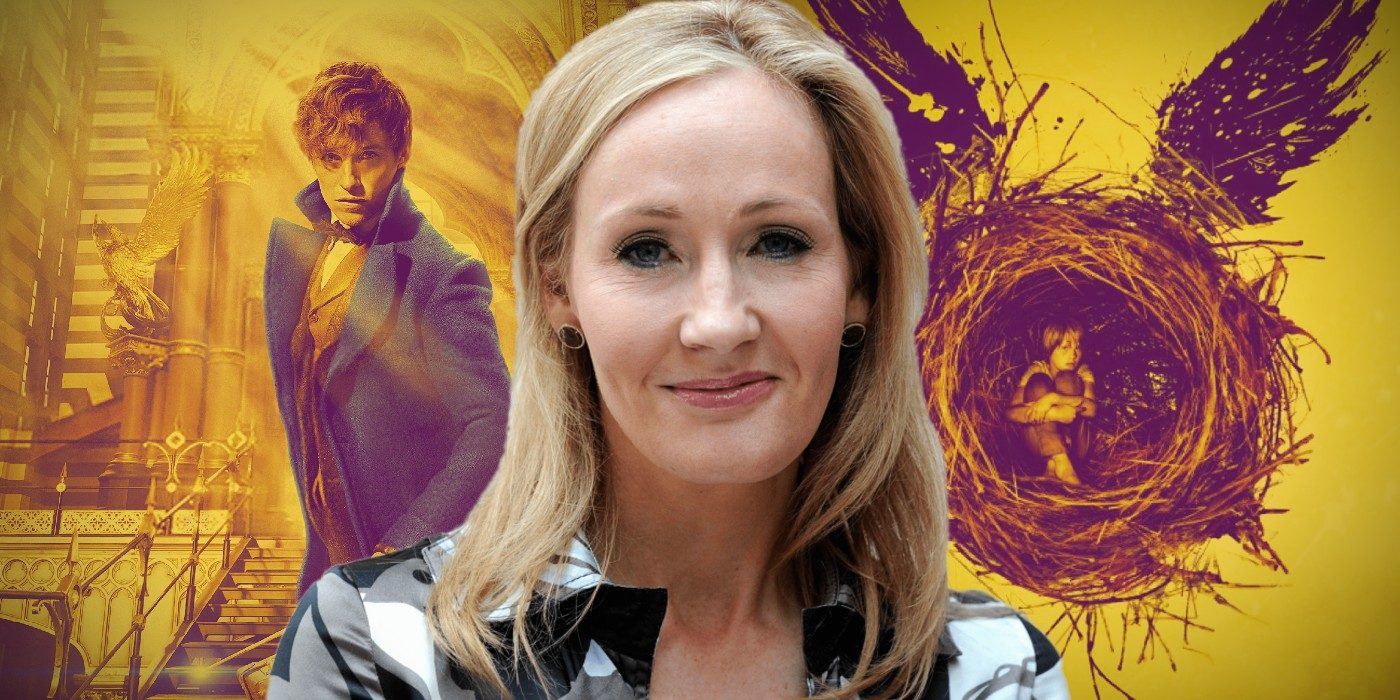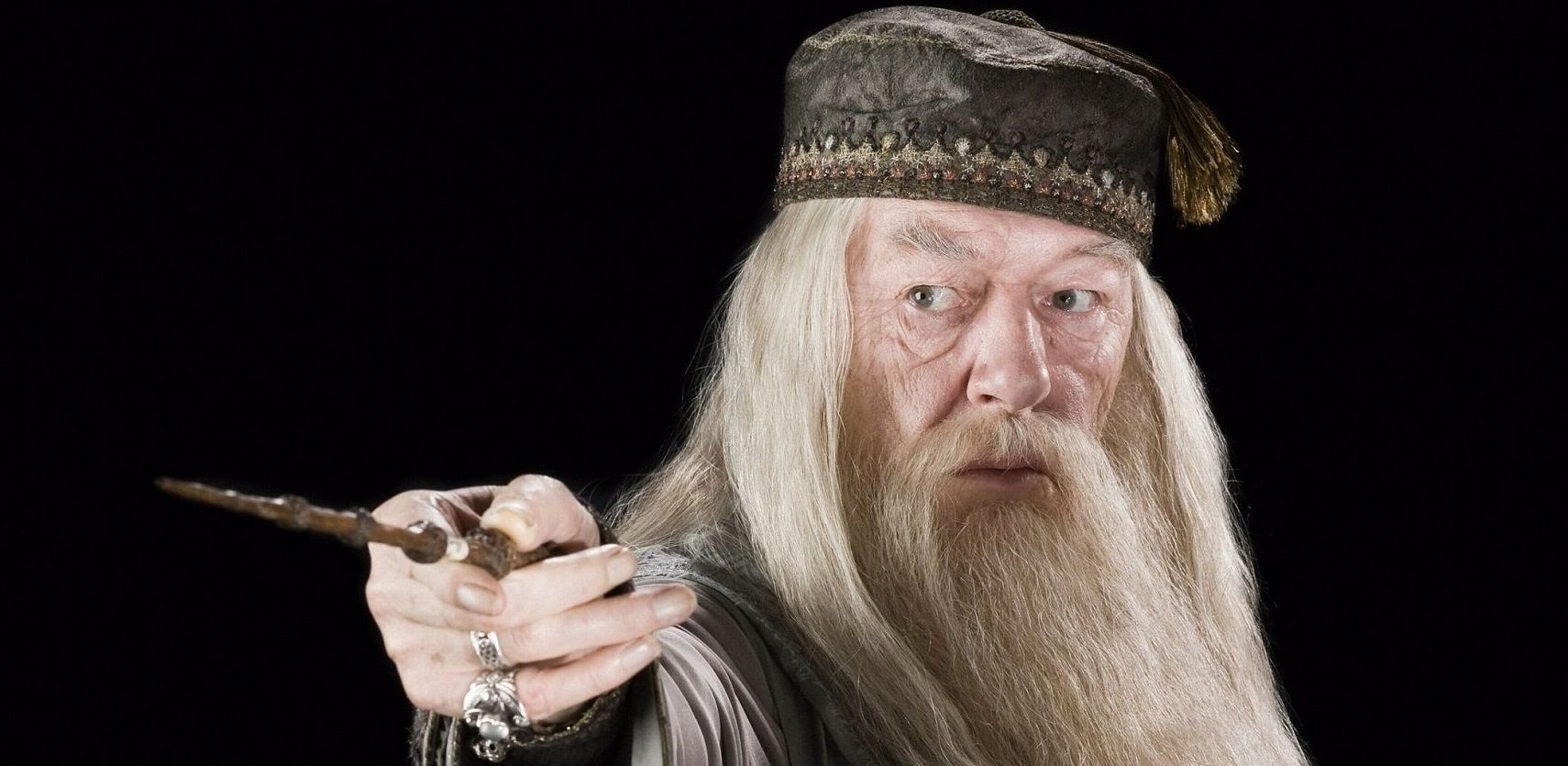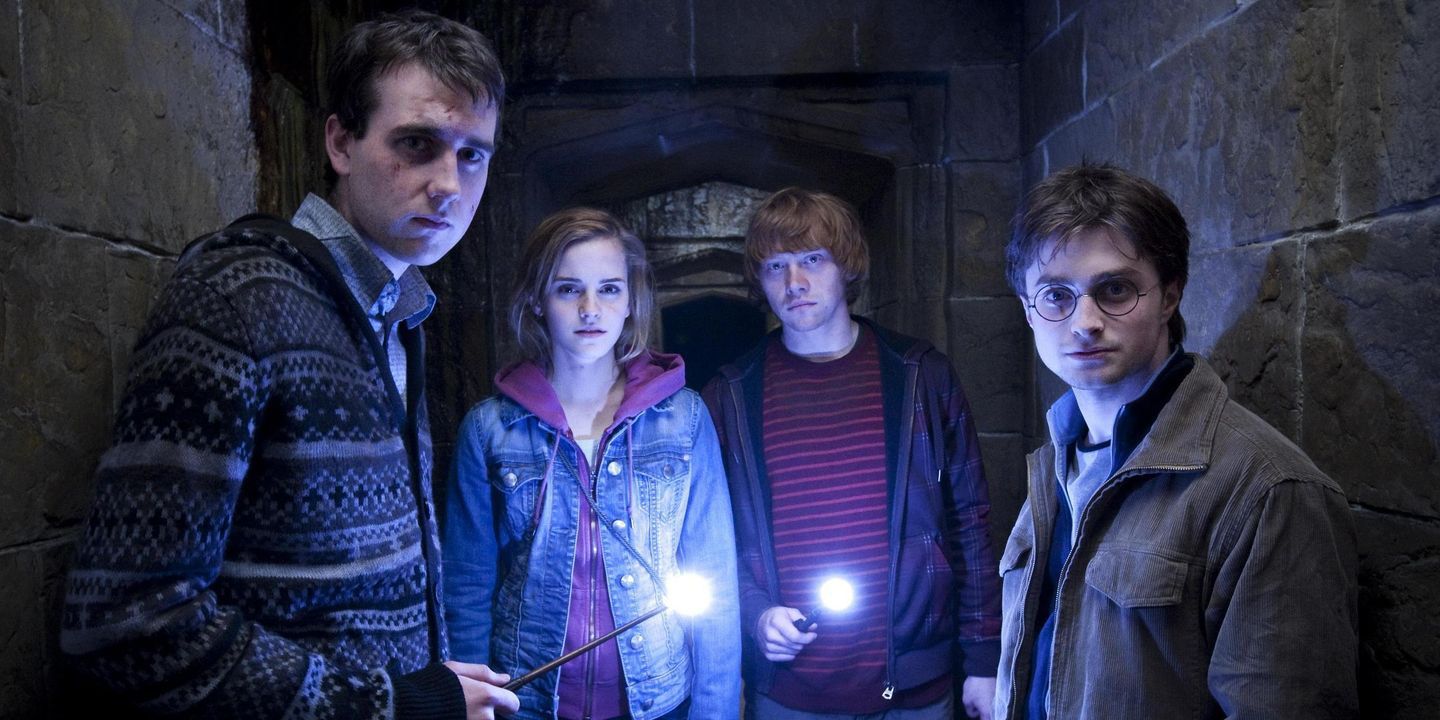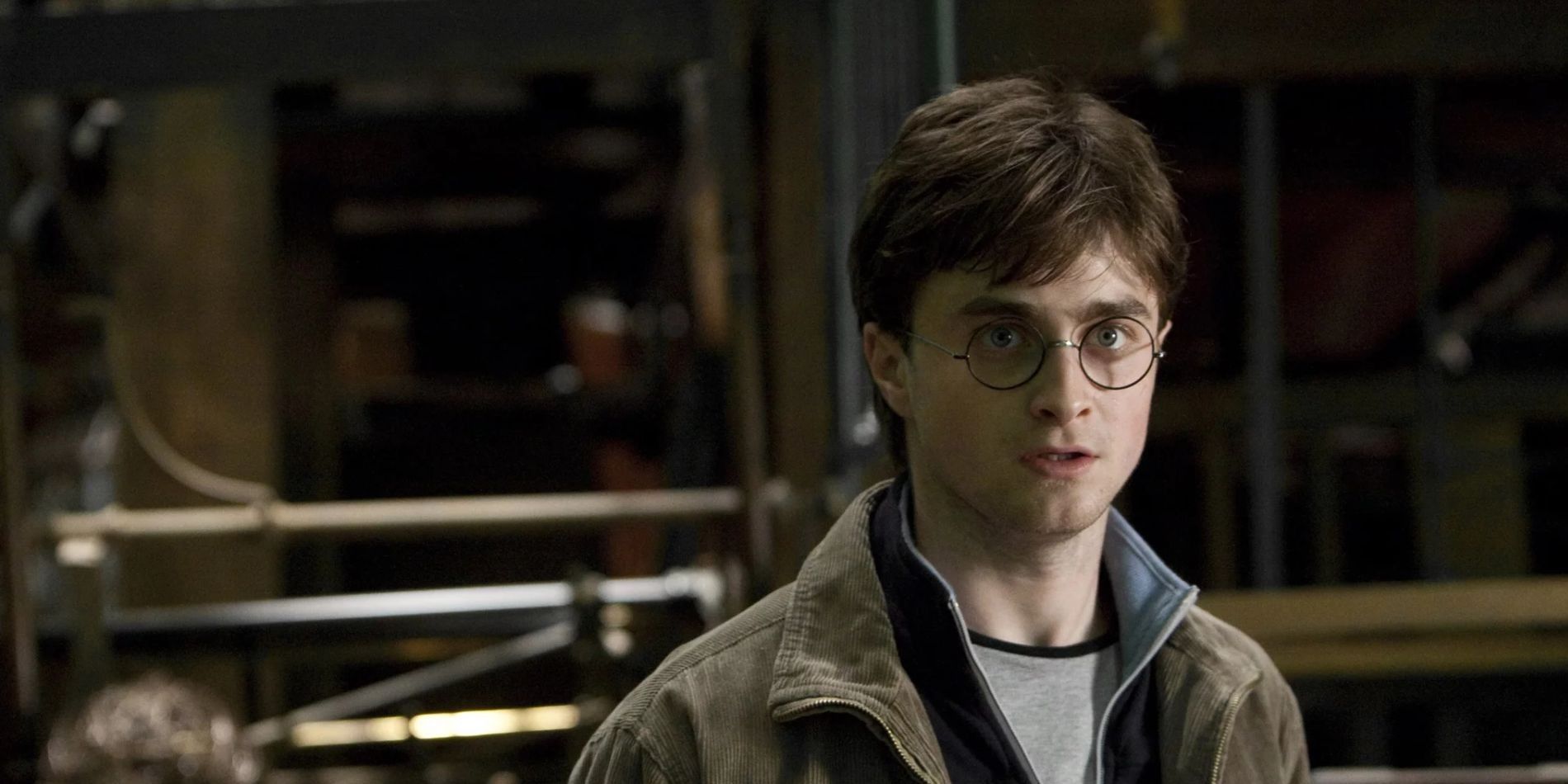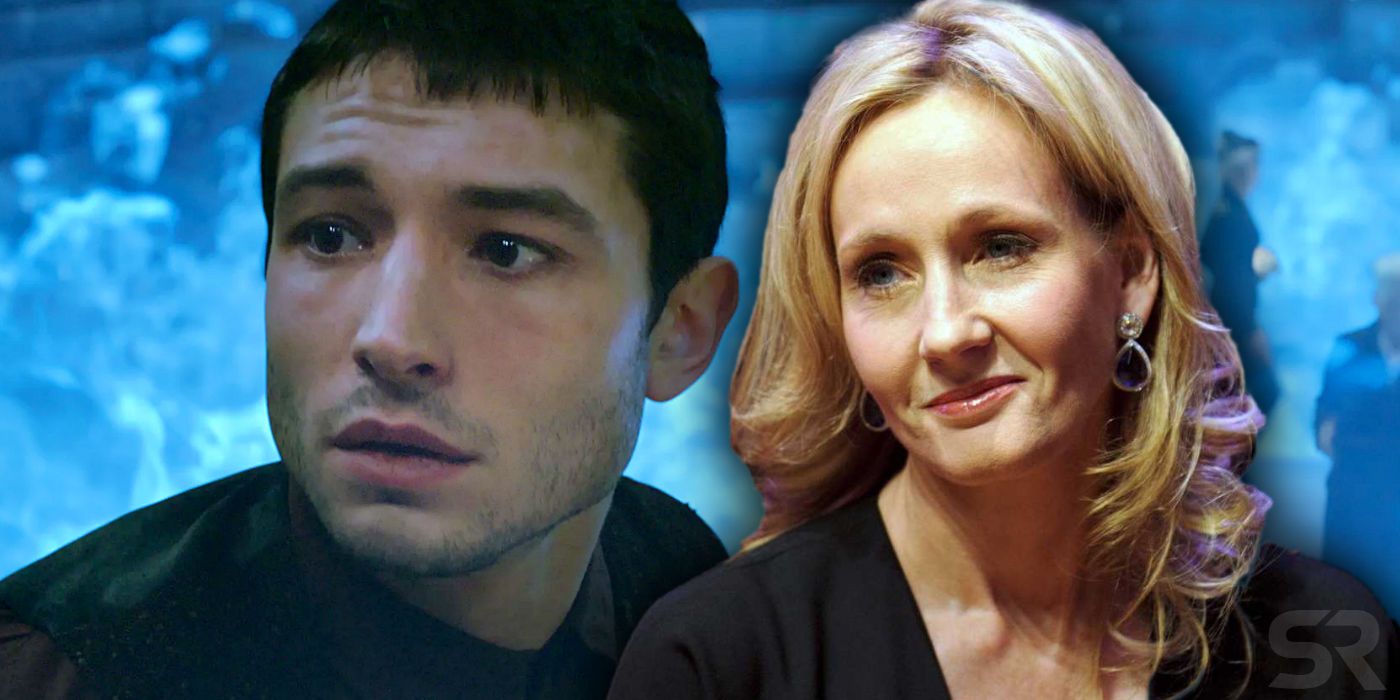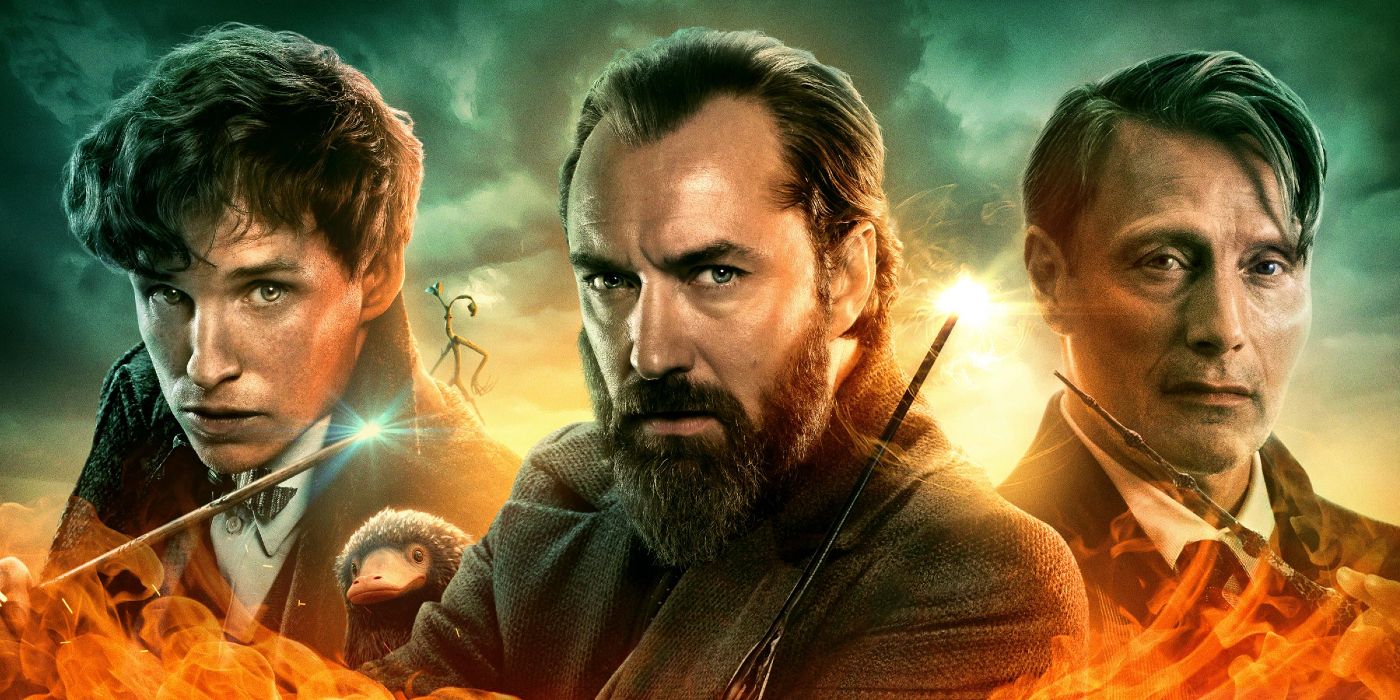J.K. Rowling keeps changing Harry Potter canon to improve the Fantastic Beasts series, but her efforts have mostly had the opposite effect. Rowling's original Harry Potter novel, Harry Potter and the Philosopher's Stone (or, as it's known in the U.S., The Sorcerer's Stone), took the world by storm when it hit bookshelves in 1997, and kicked off an entire series of books about the young boy wizard's adventures. The first Harry Potter movie adaptation hit theaters shortly after 2001 and was an equally massive success at the global box office. A further seven films were released after that and combined for a total worldwide gross of $7.7 billion.
Unsurprisingly, in the years since The Boy Who Lived's saga concluded, the larger franchise (now known as the Wizarding World) has expanded. It now encompasses theme park lands, video games, the official Pottermore website, a sequel play titled Harry Potter and the Cursed Child, and a series of prequel films about magizoologist Newt Scamander (aka. the Fantastic Beasts series). In that same time, Rowling has worked tirelessly to expand the Wizarding World mythology, including the universe's history and the backstories of its many, many characters. And yet, if anything, Rowling seems to have hurt Harry Potter's continuity more than enriched it.
Indeed, it seems like every time Rowling reveals something new about the Wizarding World, especially in Fantastic Beasts, the response is anything but positive. However, to understand why that is, one has to go back in time to a point when Rowling's changes to the Harry Potter canon tended to be better received. Here's why J.K. Rowling keeps changing Harry Potter canon, and how it's affected the larger franchise.
J.K. Rowling Has Been Adding to Harry Potter Canon For Years
Back in 2007, Rowling surprised the world by revealing that Harry's beloved Hogwarts headmaster, Albus Dumbledore, was, in fact, gay. The announcement was largely well-received by many at the time, who applauded the writer for making such an essential character in the franchise canonically queer. At the same time, even back then, some people questioned if Rowling would ever actually address Dumbledore's sexuality explicitly in a Wizarding World book and/or film. After all, the seven Harry Potter novels had all been published by then, and there wasn't much reason to suspect that the remaining films would include anything on the topic that wasn't already in the source material. Over the years that followed (pre-Fantastic Beasts), Rowling's announcement about Dumbledore came to feel a bit hollow, like a promise that would never really be fulfilled. Dumbledore's sexuality was finally revealed in Fantastic Beasts: The Secrets of Dumbledore, but only after continued outcries from the public.
Since then, Rowling has continued to flesh out the Wizarding World in other ways, ranging from major reveals about the existence of other wizarding schools around the world to minor character details, like Ravenclaw student Anthony Goldstein being Jewish. Harry Potter and the Cursed Child (which is based on a story that Rowling co-wrote) took things a step further and revealed that Voldemort — the main villain of the Harry Potter series — had conceived a child with his faithful servant, Bellatrix Lestrange, before his death.
Still, the Fantastic Beasts movies (which are being written by Rowling and Harry Potter screenwriter Steve Kloves) have arguably made the most dramatic changes and amendments to the Harry Potter canon yet. So far, the more significant alterations include the reveal that Voldemort's snake Nagini was actually a Maledictus (that is, a shape-shifting human who eventually became permanently trapped in their snake form), McGonagall's timeline, and the revelation that Credence is Aberforth Dumbledore's long-lost son.
These Changes Make the Wizarding World More Inclusive
It's generally been obvious why Rowling keeps adding new twists to the Harry Potter canon: it's an effort on her part to make the franchise more inclusive, when it comes to race and sexuality in particular. While the original Harry Potter books and movies included people of color (Parvati and Padma Patil, Kingsley Shacklebolt, Cho Chang), they were all supporting characters who played smaller roles in the series' overarching narrative. The movies were relatively more inclusive than the novels when it came to race, admittedly, and would cast actors of various ethnicities to help fill out the halls of Hogwarts. Nevertheless, the protagonists were all white (as were important players like Neville Longbottom and Luna Lovegood), and there weren't any openly queer characters at the time. Even Dumbledore's orientation was limited to before Fantastic Beasts 3.
For the most part, this wasn't unusual when Rowling was writing the Harry Potter books. In fact, she probably wasn't even considering diversity of race and sexuality all that much when she was crafting her novels, and she certainly wasn't receiving feedback on the matter from critics the way she has in the years since then. Rowling's attempts to correct this issue haven't been limited to mentioning details about Harry Potter characters after the fact. The writer has incorporated people of color into her Fantastic Beasts scripts too, with the more notable examples including Leta Lestrange (Zoë Kravitz) and Nagini, who's played by South Korea-born actress Claudia Kim. At the same time, Rowling has been criticized for restricting these characters to supporting roles (like in the Harry Potter stories), giving them highly problematic backstories, or doing little more than paying lip service to her critics.
The Original Harry Potter Books Were Limited in Scope
Another part of the reason that the Harry Potter novels weren't as inclusive as Fantastic Beasts is because they were, quite literally, limited in scope. The books were all about Harry and unfolded almost entirely from his perspective, with a few exceptions. As such, the stories tended to focus on the same locations over and over again, be it Harry's home with his relatives, the Dursleys, his visits to the Weasley family home, The Burrow, or his rare trips to Wizarding locations outside of Hogwarts (the Ministry of Magic, Hogsmeade, Diagon Alley). Moreover, if Harry didn't learn something about the Wizarding World explicitly in the story (via lessons at Hogwarts or from someone telling him), then the books simply didn't address it. This mostly seemed to benefit Rowling's world-building efforts and made it easier for her to fill in the details of Harry's subjective worldview.
As the Wizarding World has expanded, Rowling has turned her attention away from simply telling one person's story to filling out an entire universe of history, lore, and terminology. For example, the Fantastic Beasts films have moved well beyond the British setting of the original Harry Potter novels to explore what life was like for wizards in New York, Paris, Berlin, and Bhutan back in the 1920s and 30s. Similarly, Rowling has filled her website Pottermore with factoids and bits of information about the wizarding community in continents like North and South America, as well as the regions of Europe that her Harry Potter books never visited. Unfortunately, she's arguably been guilty of being sloppy with her world-building and lazily appropriating elements from real-world cultural myths and legends throughout her efforts to flesh out the Wizarding World. And if that wasn't enough, it seems like she can't stop herself from doing so.
J.K. Rowling Is Addicted To Adding Harry Potter Lore
Now that the Harry Potter franchise has become "the Wizarding World," it's expanded well beyond the seven-book story that Rowling initially set out to tell. The problem is, in the process of writing more and more details about the universe and its characters to flesh the world out, Rowling has seemingly dug a hole for herself that she keeps making deeper, the more she reveals. Some of these problems are only noticeable to hardcore Harry Potter audiences, like how Professor McGonagall being a teacher at Hogwarts in the second Fantastic Beasts movie, The Crimes of Grindelwald, is a blatant contradiction of the existing canon (to explain: the film takes place eight years before McGonagall was born). Or how Nagini was introduced and then scrapped for Fantastic Beasts 3. Others, by comparison, are mostly just funny, like Rowling's revelation that — before the introduction of plumbing — Hogwarts students would go to the bathroom by relieving themselves in public and then using magic to vanish the, er, evidence.
While fans like to joke about Rowling and her habit of revealing weird or flat-out goofy details about the Wizarding World without any prompting, they're also justifiably frustrated by her shortcomings in improving representation in the franchise. Dumbledore's sexuality was barely even subtext in the Harry Potter books, and the Fantastic Beasts movies refused to explore that Dumbledore and Grindelwald had a sexual relationship when they were younger until the latest installment, as Rowling now claims. That's to mention nothing of the franchise's issues regarding race and dooming its non-white characters to horrible fates (see Nagini and Leta), while only going so far as to develop their personalities and storylines. It's difficult for Rowling to course-correct at this point too, which is why it feels like she can't stop building on the flawed foundation that she herself laid down.
Fantastic Beasts 3 Ruined Harry Potter Canon Even More
Fantastic Beasts: The Secrets of Dumbledore was a critical failure that nosedived at the box office, showing that people aren't taking these canon changes lightly. Sure, there are several reasons why Fantastic Beasts 3 didn't perform well, despite doing better than its predecessor. Mads Mikkelsen's performance as Grindelwald was a highlight of the film, but it's not enough to save the franchise. Fantastic Beasts 4 still hasn't been picked up, and with David Yates now slated to direct another project, chances are looking slimmer and slimmer that the series will continue. The controversy surrounding Johnny Depp and Ezra Miller certainly didn't help the Fantastic Beasts movies. Nonetheless, the story is spiraling out of control.
J.K. Rowling upset many people when she brought in Nagini and McGonagall. While Nagini's story, in particular, is intriguing, Rowling added new canon information by introducing a Maledictus, then scrapping her from the storyline entirely. Tina's lack of presence was also noted in Fantastic Beasts 3, as she started out as a strong character in the first two movies but only showed up for the final scene in the third. Critics have panned The Secrets of Dumbledore for being too difficult to follow without at least one more rewatch — which is what The Crimes of Grindelwald was criticized for. It's clear that these Harry Potter canon changes aren't boding well, and Fantastic Beasts 3's reception only exemplifies that.

